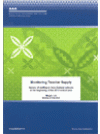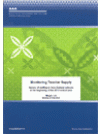The annual Survey of Staffing provides the Ministry of Education with a snapshot of the number of entitlement staffing vacancies at the start of Term 1. The survey also collects information about the number of overseas-trained and beginning teachers employed by schools. In 2013, the survey was completed by 91% of all state and state-integrated schools (92% of primary schools and 86% of secondary schools).
Key Results
Vacancies in state and state-integrated schools
There were 220.5 Full-Time Teacher Equivalent (FTTE) vacancies in state and state-integrated schools at the start of the 2013 school year. These vacancies represented 0.5% of all FTTE entitlement positions in state and state-integrated schools (0.5% in primary schools and 0.6% in secondary schools). Over the last eight years, the overall vacancy rate has varied between 0.9% and 0.4%.
As a proportion of entitlement positions, and consistent with previous years, vacancies were higher in schools in rural areas, schools with the highest proportion of Māori students on their roll (relative to other schools) and low decile schools (deciles 1–3).
Vacancies for Māori medium/bilingual teachers in primary schools
In primary schools, there were 16 FTTE vacancies for Māori medium/bilingual teachers. These vacancies represented 0.5% of all FTTE entitlement positions in schools that offer Māori medium education (slightly higher than 0.4% in 2012 and higher than 0.2% in 2011).
Vacancies for Pasifika Medium/bilingual teachers in primary schools
At the start of Term 1 2013, there were no reported vacancies for Samoan, Tongan or Cook Islands bilingual teachers — representing a decrease compared to 0.4% in 2012 and 0.2% in 2011 of all FTTE entitlement positions in primary schools that offer Pasifika medium education.
Subject vacancies in secondary schools
Vacancies in secondary schools were most likely to be for mathematics & statistics (15% of vacancies), followed by vacancies for Māori language teachers (Te Reo Māori and Māori medium/bilingual, 13%), technology subjects (13%) and science subjects (12%). Comparison with past years shows that English, Māori language, mathematics & statistics, and science subjects typically have the largest vacancy rates. A higher demand for teachers would be expected in the core subjects offered in secondary schools. Vacancies in technology subjects fluctuate more markedly, with the rate in 2013 (13%) being a marked increase on the rate in 2012 (5.2%).
Re-advertised vacancies
In 2013, 22% of vacancies in primary schools and 41% of vacancies in secondary schools at the beginning of Term 1 had been re-advertised. There is anecdotal evidence that schools may choose to re-advertise vacancies to broaden their pool of applicants so care is required when considering these results. Re-advertised vacancies represented just 0.1% of all FTTE entitlement positions in primary schools and 0.2% of entitlement positions in secondary schools. The proportion of re-advertised vacancies in primary and secondary schools has fluctuated over the last eight years, but in 2013 were half what they were in 2006.
Relief teachers for positions that require proficiency in Te Reo Māori
Overall, 62% of principals (with positions that require teachers to be proficient in Te Reo Māori) reported finding it ‘very difficult’ to find relief teachers for positions that require proficiency in Te Reo Māori (60% of such primary schools and 65% of such secondary schools). Twenty-nine per cent of principals (31% of such primary schools and 26% of such secondary schools) reported finding it ‘somewhat difficult’ to source relief teachers for these positions.
New Zealand-trained applicants
Over the past three years, there has been an increase in the number of New Zealand trained teachers applying for permanent positions in primary schools. Seventy-three per cent of primary schools had nine or more applicants for permanent Scale A classroom teacher position in 2013, compared to 70% of primary schools in 2012 and 59% in 2011.
In secondary schools, the number of New Zealand trained applicants for positions has stayed relatively stable over the last three years. In 2013, schools were less likely to receive a high number of applications (nine or more) for Te Reo Māori, physics and technology positions compared to other subjects — a trend that has been consistent over the last three years.
While the proportion of schools receiving no New Zealand trained applicants increased for Te Reo Māori, health & physical education, chemistry, physics and technology compared to 2012, it is important to keep in mind the actual numbers involved in such cases are quite small. For example, in 2013 seven secondary schools reported receiving no applicants for Te Reo Māori positions, representing 13% of all secondary schools advertising a Te Reo Māori position.
Overseas-trained teachers
The number of relatively new overseas teachers employed in state and state-integrated schools has declined over the last four years. Relatively new overseas-trained teachers in 2013 represented 0.4% of all teachers in primary schools (down from 1.0% in 2009 but the same proportion as in 2012) and 0.6% of all teachers in secondary schools (down from 1.7% in 2009 and 0.8% in 2012).
Beginning teachers
Over the last five years, the percentage of first year beginning teachers (as a proportion of all teachers) has fluctuated. Overall, in 2013, first year beginning teachers made up 4.2% of all teachers (higher than the 3.6% in 2012 and 2011). First year beginning teachers comprised 4.9% of teachers in the primary sector (up from 3.8% in 2012) and 3.2% of teachers in the secondary sector (down slightly from 3.3% in 2012).


